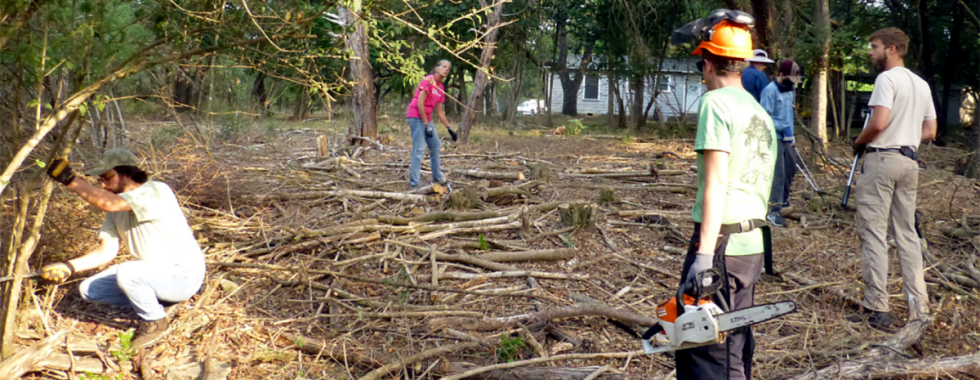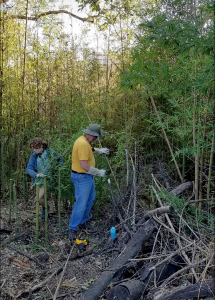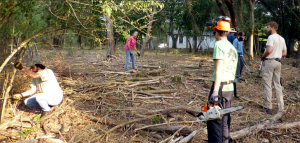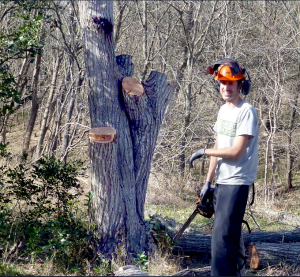Removing Invasives
In partnership with the San Marcos Greenbelt Alliance, Hays County Master Naturalists, and Hays County Master Gardeners, the City of San Marcos leads monthly volunteer workdays in the natural areas focusing on invasive species removal. Efforts began in 2016 at Sessom NA, and over the years have moved to Schulle Canyon NA and now Prospect Park.
Because nonnative invasive plant species do not have natural competition to keep their populations in check, they out-compete and displace native plants by producing more seed, quick growth, and the tendency to create monocultures.
The primary species targeted in the natural areas include glossy privet (Ligustrum japonicum), Chinese tallow (Triadica sebifera), chinaberry (Melia azedarach), tree of heaven (Ailanthus altissima), golden bamboo (Phyllostachys aurea), heavenly bamboo (Nandina domestica), and giant cane reed (Arrundo donax).
Invasive species reduce biodiversity and cause erosion, among other ecological problems. After removals, Team Flora spreads native seeds collected to help stabilize soils and increase stormwater infiltration to enhance water quality. Removed trees are used on site – trunks placed along contour on slopes and branches cut and spread or chipped on site. This helps return nutrients to the soil, retains soil moisture, and provides erosion control.
Invasive plant management is an important component to habitat conservation and land stewardship as it promotes native vegetation establishment, reestablishes wildlife habitat, and restores natural ecosystem functions. In addition, our natural areas serve as major tributaries and/or recharge features that connect to the aquifer and upper San Marcos River.
The Edwards Aquifer, San Marcos springs, and upper San Marcos River are home to endangered and threatened species, many that are found nowhere else in the world. As part of the Edwards Aquifer Habitat Conservation Plan, conservation measures have been implemented along the river to enhance and conserve habitat for these species, including a robust riparian buffer zone. By removing invasive species seed sources in the watershed along tributaries, the riparian buffer is further protected from future introduction of invasives species, and benefits from improved water quality and quantity.
For more information about invasive species, visit www.texasinvasives.org. To get involved in this project, sign up for our monthly volunteer workdays at https://www.signupgenius.com/go/30e084ba8ae2ca7fc1-habitat.
Written by Eric Weeks, Discovery Center Coordinator at the City of San Marcos and Treasurer and Secretary for the San Marcos Greenbelt Alliance.





